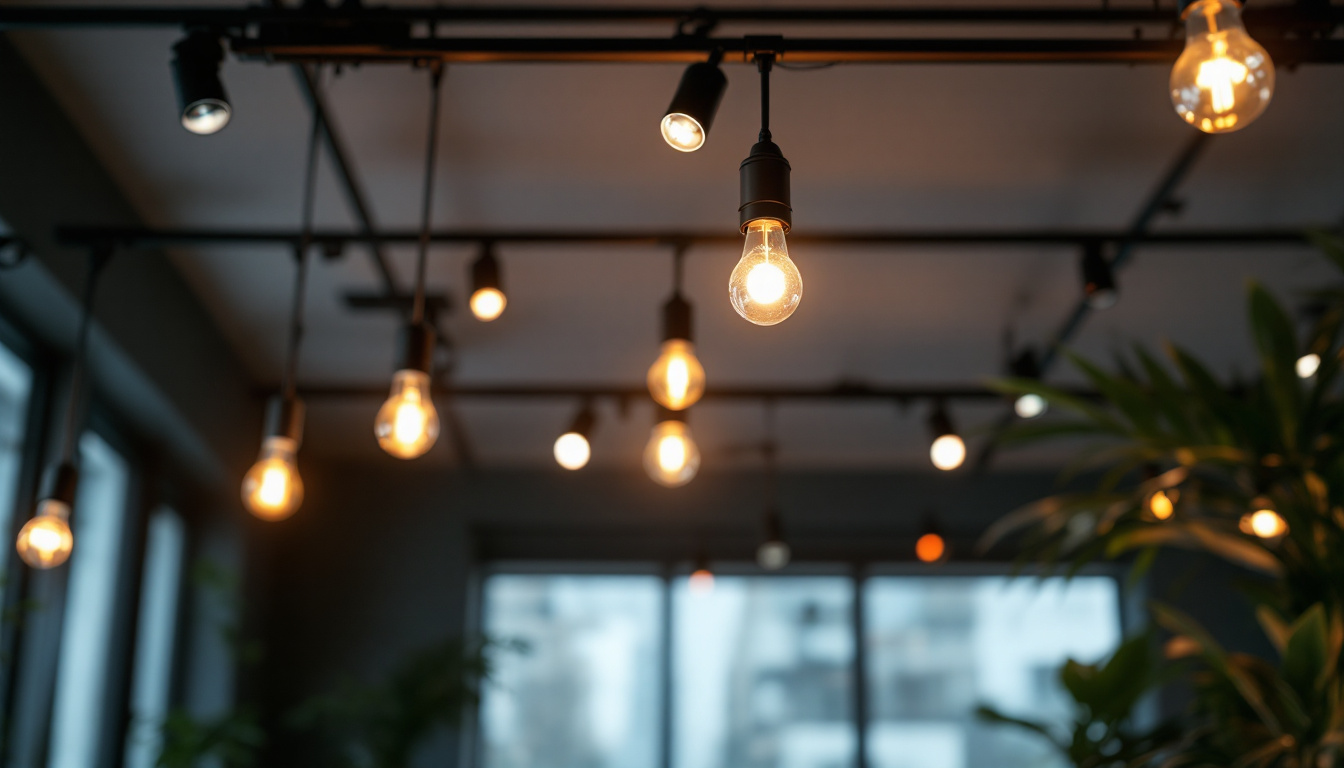
In the world of lighting design, understanding the nuances of light behavior is crucial for achieving the desired ambiance and functionality in any space. One such phenomenon that lighting contractors must grasp is light wrap. This article aims to break down the concept of light wrap, its significance, and practical applications in a concise manner tailored for lighting professionals.
Light wrap refers to the way light interacts with surfaces and objects in an environment, creating a soft, diffused effect around the edges of illuminated subjects. This effect is particularly important in photography and videography, but it also plays a significant role in architectural and landscape lighting.
Essentially, light wrap occurs when light bounces off surfaces and wraps around objects, creating a more natural and appealing look. It can enhance the visual quality of a scene by softening shadows and reducing harsh contrasts, thereby making the lighting appear more cohesive and integrated.
The mechanics of light wrap involve several factors, including the type of light source, the angle of illumination, and the reflective properties of surrounding surfaces. For instance, a soft light source, such as LED panels or diffused lamps, tends to create a more pronounced light wrap effect compared to harsh, direct lighting.
Additionally, the color and texture of surfaces can influence how light wraps around objects. Lighter, smoother surfaces reflect light more effectively, enhancing the wrap effect, while darker or rougher surfaces may absorb more light, diminishing this phenomenon. This interplay between light and surface characteristics can be strategically utilized to create mood and depth in visual compositions, making it a vital consideration for artists and designers alike.
For lighting contractors, understanding light wrap is essential for several reasons. First, it allows for the creation of more visually appealing spaces. By leveraging light wrap, contractors can soften the appearance of shadows, making areas feel more inviting and comfortable.
Moreover, light wrap can improve the functionality of a space. For example, in task-oriented areas like kitchens or offices, proper light wrap can ensure that surfaces are evenly illuminated, reducing eye strain and enhancing productivity. In residential settings, light wrap can be used to create a warm and cozy atmosphere, particularly in living rooms or bedrooms where soft, enveloping light can promote relaxation. By carefully considering the placement of light sources and the materials used in a space, designers can achieve a harmonious balance that not only looks good but also feels good to inhabit.
Furthermore, light wrap is not just limited to indoor environments. In outdoor settings, it can enhance the beauty of landscapes and architectural features. For instance, strategically placed garden lights can create a gentle glow that wraps around trees and pathways, making outdoor spaces more inviting during the evening hours. This technique can also highlight the textures of natural elements, such as stone walls or water features, adding depth and interest to the overall design. By understanding and applying the principles of light wrap, designers can transform both indoor and outdoor spaces into visually stunning environments that engage and delight the senses.
Light wrap is not just a theoretical concept; it has practical applications across various settings. Whether working on residential, commercial, or outdoor projects, understanding how to utilize light wrap can significantly enhance the outcome.
In residential spaces, light wrap can be used to create a warm and inviting atmosphere. By strategically placing light sources to encourage light wrap around furniture and architectural features, contractors can enhance the overall aesthetic of a room. For instance, using wall sconces or floor lamps can help achieve this effect, allowing light to bounce off walls and ceilings.
Furthermore, in areas like living rooms or bedrooms, soft light wrap can help create a cozy environment, making spaces feel more welcoming. This is particularly important in areas where people gather, as the right lighting can influence mood and comfort levels.
In commercial settings, the application of light wrap takes on a different dimension. Here, the focus is often on functionality and branding. Effective use of light wrap can enhance product displays, making items more visually appealing to customers. For example, retail spaces can benefit from light wrap that highlights merchandise while maintaining an inviting atmosphere.
Moreover, in office environments, light wrap can improve employee well-being. By ensuring that workspaces are well-lit without harsh shadows, contractors can foster a more productive work environment. This is particularly crucial in open-plan offices where natural light may be limited.
Outdoor lighting presents unique challenges and opportunities for utilizing light wrap. In landscape lighting, for instance, effective light wrap can enhance the beauty of gardens and architectural features at night. By using fixtures that cast soft light and allow for reflection off surrounding surfaces, contractors can create an enchanting outdoor atmosphere.
Additionally, in security lighting, light wrap can help illuminate pathways and entry points without creating stark contrasts that might lead to confusion or discomfort. This is especially important in residential areas where safety and visibility are paramount.
To effectively utilize light wrap in lighting design, contractors can employ various techniques that enhance its presence and impact. Understanding these techniques can lead to more successful projects and satisfied clients.
The choice of lighting fixtures plays a significant role in achieving optimal light wrap. Soft, diffused lighting sources, such as LED strips or pendant lights with frosted shades, can help create a gentle wrap effect. These fixtures distribute light evenly, reducing harsh shadows and enhancing the overall ambiance.
Moreover, adjustable fixtures can allow for flexibility in directing light. By angling lights to bounce off walls or ceilings, contractors can maximize the light wrap effect, creating a more dynamic and engaging environment.
Strategic placement of lights is crucial for maximizing light wrap. Positioning fixtures at varying heights and angles can encourage light to bounce off surfaces in multiple directions. For instance, placing lights closer to walls can enhance the wrap effect, while also providing more even illumination across the space.
Additionally, using multiple light sources can create layers of light, further enhancing the wrap effect. This layered approach allows for greater control over the mood and functionality of a space, providing versatility in design.
Incorporating reflective surfaces into a lighting design can significantly enhance the light wrap effect. Mirrors, glossy finishes, and light-colored walls can all contribute to a more pronounced wrap, as they reflect light back into the space. This not only increases brightness but also creates a sense of openness and airiness.
Contractors should consider the materials used in a space and how they can be leveraged to enhance light wrap. For example, using light-colored cabinetry in kitchens or reflective tiles in bathrooms can amplify the effects of the lighting design.
While light wrap can greatly enhance lighting design, there are challenges that contractors may face in achieving the desired effect. Understanding these challenges can help in devising effective solutions.
One of the primary challenges in achieving effective light wrap is balancing light levels throughout a space. Too much light can lead to glare and discomfort, while too little can result in insufficient illumination. Finding the right balance is crucial for creating a harmonious environment.
Contractors can address this challenge by using dimmers or adjustable fixtures that allow for fine-tuning of light levels. This flexibility enables contractors to adapt the lighting to different activities or times of day, ensuring optimal comfort and functionality.
Another challenge is managing color temperature. Different light sources emit varying color temperatures, which can affect the perception of light wrap. For instance, warm light may create a softer wrap, while cooler light can produce a more stark effect.
Contractors should consider the desired atmosphere when selecting light sources. Mixing different color temperatures can create interesting effects, but it’s essential to maintain a cohesive look throughout the space. This can often be achieved by using fixtures that offer adjustable color temperatures.
Finally, managing client expectations is an important aspect of successfully implementing light wrap. Clients may have specific visions for their spaces that may not align with the principles of effective lighting design. Educating clients about the benefits of light wrap and how it can enhance their space is crucial.
Open communication and collaboration can help contractors align their designs with client expectations while also ensuring that the final outcome meets professional standards. Providing visual aids or examples can also assist in conveying the potential of light wrap in a project.
Understanding light wrap is essential for lighting contractors aiming to create visually appealing and functional spaces. By grasping the mechanics of light wrap, employing effective techniques, and addressing potential challenges, contractors can significantly enhance their lighting designs.
From residential to commercial and outdoor settings, the applications of light wrap are vast and impactful. By mastering this concept, lighting professionals can elevate their work, ensuring client satisfaction and creating environments that are not only beautiful but also practical.
As the field of lighting design continues to evolve, staying informed about concepts like light wrap will be crucial for contractors looking to stay ahead in the industry. Embracing these principles will not only improve the quality of projects but also contribute to the overall success of lighting endeavors.
Ready to bring the concept of light wrap into your next lighting project? At LumenWholesale, we provide lighting contractors with the ideal tools to create that perfect ambiance. Our spec-grade lighting products not only meet the highest industry standards but also come at unbeatable wholesale prices. Say goodbye to inflated markups and hello to superior lighting solutions that fit your budget. With free shipping on bulk orders, you can stock up on premium lighting without any hidden fees. Elevate your lighting designs today and discover the best value in wholesale lighting at LumenWholesale.

Discover how electricity tools are revolutionizing the lighting industry, offering lighting contractors a competitive edge with enhanced efficiency, precision, and innovation.

Discover how track light light bulbs can enhance profitability in lighting installations.

Discover the ultimate guide to Floodlight Solar, where lighting contractors can find top resources and expert tips for mastering solar-powered lighting solutions.

Unlock the secrets of effective lighting with our comprehensive guide tailored for lighting contractors.